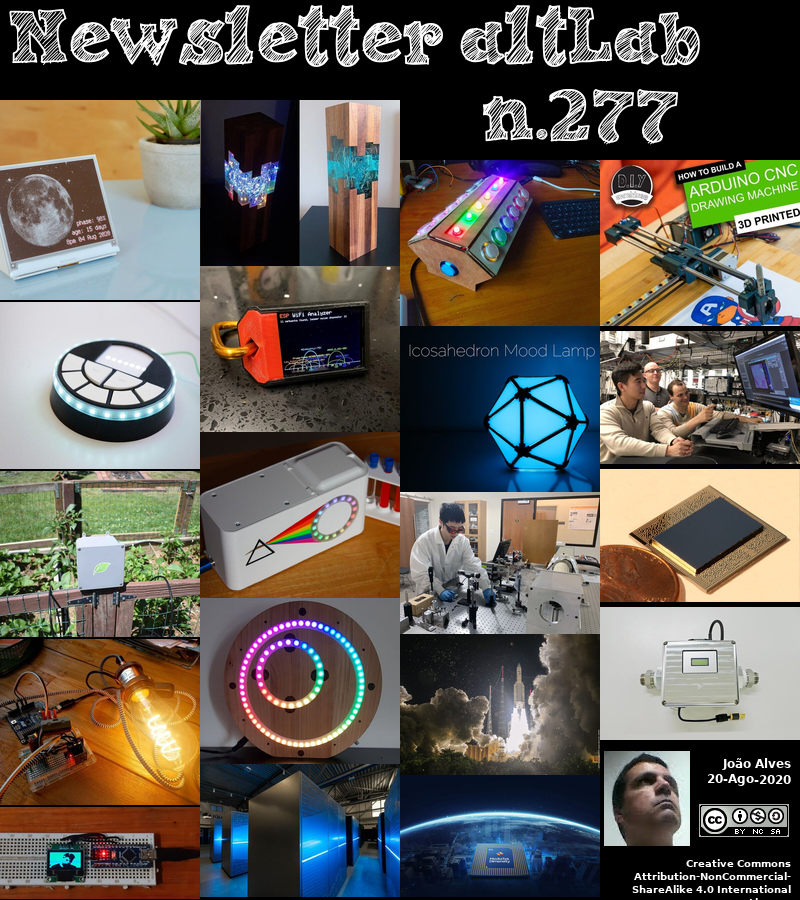2020-08-20 - Nº 277
Editorial
Esta é a Newsletter Nº 277 que se apresenta com o mesmo formato que as anteriores. Se gostar da Newsletter partilhe-a!
Todas as Newsletters encontram-se indexadas no link.
Esta Newsletter tem os seguintes tópicos:
Faz hoje anos que nascia, em 1779, o químico sueco Jons Jacob Berzelius. Ele estabeleceu as bases da química moderna. Entre suas contribuições estão a determinação de pesos atómicos, a substituição de signos alquímicos por letras para símbolos químicos e o uso de pequenos números para indicar proporções relativas a fórmula de um composto, novos métodos analíticos e uma teoria electroquímica. Ele descobriu o selénio e o tório e co-descobriu o cério. Os seus alunos isolaram lítio (Johann Awfwedsen), vanádio (Nils Sefstrom) e vários elementos de terras raras (Carl Mosander). Berzelius usou uma corrente eléctrica para determinar que os sais podiam ser divididos em partes positivas e negativas.
Faz também hoje anos que nascia, em 1957, o matemático britânico Simon Donaldson. Ele recebeu a Medalha Fields em 1986 pelo seu trabalho em topologia. Quase todo o seu trabalho se enquadra nas duas esferas de geometria diferencial de feixes de vectores holomórficos e aplicações da teoria de calibre para topologia de 4 variedades. Surpreendentemente, Donaldson resolveu problemas de matemática usando ideias da física (enquanto a maioria da matemática é geralmente aplicada à física). A partir das generalizações de Yang-Mills das equações electromagnéticas de James Clerk Maxwell, Donaldson usou soluções especiais para essas equações, chamadas instantons, para examinar as quatro variedades gerais. Depois de receber a Medalha Fields, Donaldson continuou sua exploração de ideias da física com aplicações à matemática.
E nesta semana que passou, o Zwicky Transient Facility (ZTF), uma câmara de pesquisa robótica localizada no Observatório Palomar perto de San Diego, avistou um asteróide que tinha, poucas horas antes, viajado apenas 2.950 quilómetros acima da superfície da Terra. Designado por 2020 QG, é o asteróide conhecido que mais próximo passou pela Terra sem chocar com o planeta. O Asteróide 2020 QG tem cerca de 3 a 6 metros de diâmetro, e como tal não era grande o suficiente para causar qualquer dano, mesmo se tivesse vindo na direcção da Terra; a nossa atmosfera trataria de o queimar.
Também esta semana que passou, cientistas resolveram um problema antigo de calcular em que medida a nossa lua se está a afastar da Terra. A Lua afasta-se sensivelmente quatro centímetros da Terra por ano. Durante décadas, os cientistas mediram o recuo da lua disparando um laser contra painéis reflectores de luz, conhecidos como retro-reflectores, que foram deixados na superfície lunar, e cronometrando a viagem de ida e volta da luz. Mas os cinco retro-reflectores da lua são antigos e agora são muito menos eficientes a lançar a luz de volta. Para determinar se uma camada de poeira lunar pode ser a culpada, os investigadores desenvolveram um plano audacioso: eles lançaram a luz laser de um retro-reflector muito menor, mas mais recente, montado a bordo de uma nave espacial da NASA que estava a deslizar sobre a superfície da lua a milhares de quilómetros por hora. E funcionou. Os resultados foram publicados este mês na revista Earth, Planets and Space.
Ainda esta semana a Cerebras anunciou um novo recorde para processadores. Foi anunciado o novo CWSE (Cerebras Wafer Scale Engine) usando tecnologia de 7 nm e produzido pela TSMC ele tem 850,000 cores optimizados para IA, com 2.6 Biliões de Transístores.
Na Newsletter desta semana apresentamos diversas noticias, artigos científicos assim como projetos de maker. É apresentada a revista Hackspace Magazine Nº34 de Setembro assim como alguns livros.
 João Alves ([email protected])
João Alves ([email protected])
O conteúdo da Newsletter encontra-se sob a licença  Creative Commons Attribution-NonCommercial-ShareAlike 4.0 International License.
Creative Commons Attribution-NonCommercial-ShareAlike 4.0 International License.
Novidades da Semana
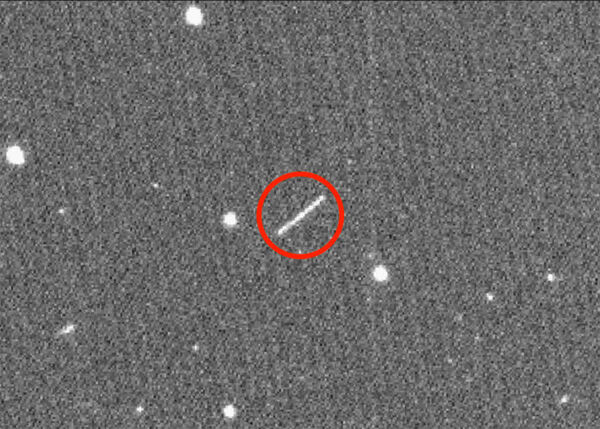
ZTF Finds Closest Known Asteroid to Fly By Earth
"On August 16, the Zwicky Transient Facility (ZTF), a robotic survey camera located at Palomar Observatory near San Diego, spotted an asteroid that had, just hours earlier, traveled only 1,830 miles (2,950 kilometers) above Earth's surface. Designated 2020 QG, it is the closest known asteroid to fly by Earth without impacting the planet. The previous known record-holder is asteroid 2011 CQ1, discovered by the Catalina Sky Survey in 2011, which passed above Earth about 1,550 miles (2,500 kilometers) higher than 2020 QG. Asteroid 2020 QG is about 10 to 20 feet (3 to 6 meters) across, or roughly the size of an SUV, so it was not big enough to do any damage even if it had been pointed at Earth; instead, it would have burned up in our planet's atmosphere. "The asteroid flew close enough to Earth that Earth's gravity significantly changed its orbit," says ZTF co-investigator Tom Prince, the Ira S. Bowen Professor of Physics at Caltech and a senior research scientist at JPL, which Caltech manages for NASA. Asteroids of this size that fly roughly as close to Earth as 2020 QG do occur about once a year or less, but many of them are never detected." [...]
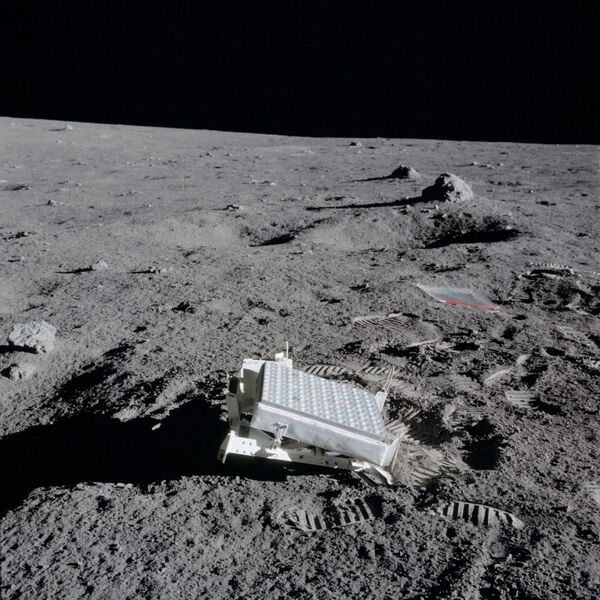
How Do You Solve a Moon Mystery? Fire a Laser at It
"The moon is drifting away. Every year, it gets about an inch and a half farther from us. Hundreds of millions of years from now, our companion in the sky will be distant enough that there will be no more total solar eclipses. For decades, scientists have measured the moon’s retreat by firing a laser at light-reflecting panels, known as retroreflectors, that were left on the lunar surface, and then timing the light’s round trip. But the moon’s five retroreflectors are old, and they’re now much less efficient at flinging back light. To determine whether a layer of moon dust might be the culprit, researchers devised an audacious plan: They bounced laser light off a much smaller but newer retroreflector mounted aboard a NASA spacecraft that was skimming over the moon’s surface at thousands of miles per hour." [...]
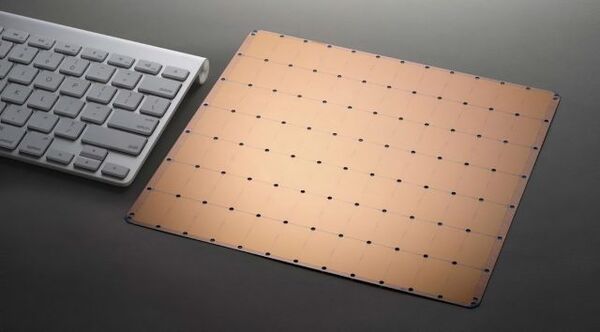
Cerebras Wafer Packs 2.6 Trillion-Transistor CPU With 850,000 Cores
"A few years ago, we started to see researchers discussing an old manufacturing idea first explored in the 1980s: Wafer-scale processing. The idea of WSP is straightforward: Instead of dicing a wafer into individual chips and then packaging those chips for resale, build a single core or collection of cores using much, if not all, of the wafer for a single chip. The AI/machine learning startup Cerebras has revived the idea of wafer-scale processing for a first-generation processor we covered last year. The “old” Cerebras Wafer Scale Engine (CWSE) was a 16nm wafer with 400,000 AI cores, 1.2T transistors, 18GB of onboard memory, 9 PB/s of total memory bandwidth, and 100Pb/s of total fabric bandwidth. The new version of the CWSE is supposedly even larger: 850,000 AI-optimized cores 2.6 Trillion Transistors TSMC 7nm Process That’s a whole lot of transistors. And cores." [...]
Outras Notícias
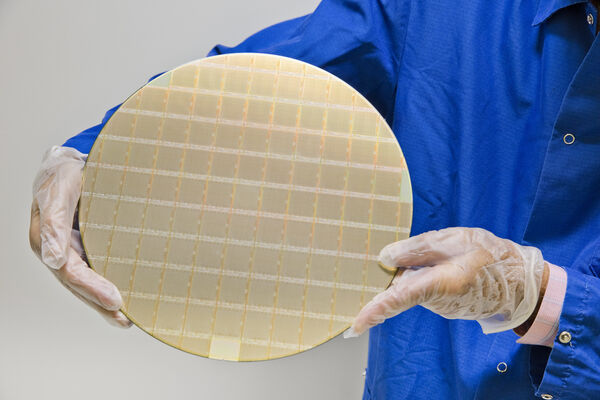
IBM Reveals Next-Generation IBM POWER10 Processor
"IBM (NYSE: IBM) today revealed the next generation of its IBM POWER central processing unit (CPU) family: IBM POWER10. Designed to offer a platform to meet the unique needs of enterprise hybrid cloud computing, the IBM POWER10 processor uses a design focused on energy efficiency and performance in a 7nm form factor with an expected improvement of up to 3x greater processor energy efficiency, workload capacity, and container density than the IBM POWER9 processor.1 Designed over five years with hundreds of new and pending patents, the IBM POWER10 processor is an important evolution in IBM's roadmap for POWER. Systems taking advantage of IBM POWER10 are expected to be available in the second half of 2021. Some of the new processor innovations include: - IBM's First Commercialized 7nm Processor that is expected to deliver up to a 3x improvement in capacity and processor energy efficiency within the same power envelope as IBM POWER9, allowing for greater performance.1 - Support for Multi-Petabyte Memory Clusters with a breakthrough new technology called Memory Inception, designed to improve cloud capacity and economics for memory-intensive workloads from ISVs like SAP, the SAS Institute, and others as well as large-model AI inference. - New Hardware-Enabled Security Capabilities including transparent memory encryption designed to support end-to-end security. The IBM POWER10 processor is engineered to achieve significantly faster encryption performance with quadruple the number of AES encryption engines per core compared to IBM POWER9 for today's most demanding standards and anticipated future cryptographic standards like quantum-safe cryptography and fully homomorphic encryption." [...]
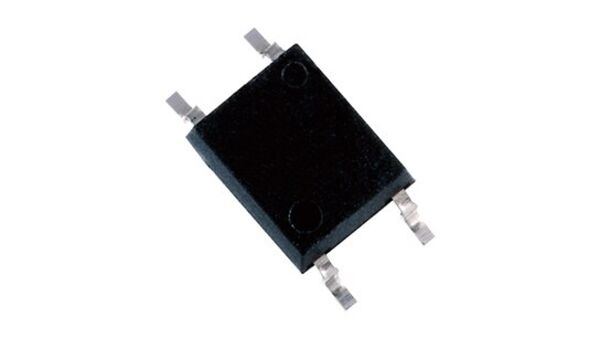
Toshiba’s New Photorelays with Low Trigger LED Current Contribute to Low Power Consumption in Battery-Powered Equipment
"Toshiba Electronic Devices & Storage Corporation (“Toshiba”) has launched two new photorelays "TLP170AM" and "TLP170GM" in a small 4-pin SO6 package, for security systems, building automation and other industrial equipment. The new products feature a maximum trigger LED current of 1mA, which reduces input side power loss by increasing the sensitivity of the photodiode array. Using these photorelays for ON/OFF control in battery-powered security devices and various sensors contributes to lower power consumption and longer operation of devices. TLP170AM has a rated OFF-state output terminal voltage of 60V and a constant ON-state current (ION) of 0.7A, with pulse operation of up to 2.1A. The TLP170GM is a 350V version with an ION of 110mA constant current and 330mA pulse operation. The 4-pin SO6 package enables a minimum isolation voltage of 3750Vrms, allowing the devices to be used in equipment requiring high insulation performance." [...]

Panasonic Develops an Ultrasonic Gas Flow and Concentration sensor for Hydrogen
"This represents the industry's first sensor1 enabling real-time simultaneous measurement of the flow rate and concentration of hydrogen under a highly humid environment Panasonic Corporation has developed an ultrasonic gas flow and concentration sensor for hydrogen that enables the real-time simultaneous measurement of the flow rate and concentration of hydrogen under a highly humid environment for the first time in the industry. In recent years, with growing interest in hydrogen as the next generation energy, actions aimed at utilizing hydrogen energy are actively being promoted around the world. With the aim of further spreading and expanding fuel cells that generate electricity through the chemical reaction of hydrogen, the research and evaluation of stack units used as key components are becoming increasingly important. However, it is difficult for fuel cells to cause a full reaction of all of supplied hydrogen, and the unreacted hydrogen is exposed to high temperature and very humid conditions due to heat and water produced through the chemical reaction. In order to increase the efficiency of stack unit evaluation and the utilization ratio of hydrogen, it is effective to collect and recycle unreacted hydrogen. However, there is a problem whereby it is difficult for the conventional thermal flow rate sensor and concentration sensor to accurately measure the unreacted hydrogen because the sensor has poor performance under humid conditions." [...]

Microchip Announces High-Speed CoaXPress 2.0 Devices that Speed Machine Vision Image Capture While Simplifying System Design and Deployment
"Builds on company’s work with industry standards bodies and lead customers who are using the devices to create capture cards and cameras supporting the new specifications Until the 12.5Gbps CoaXPress® 2.0 interface standard was ratified last year, machine-vision image-capture solutions had replaced conveyor belts as the primary roadblock to achieving faster production-line throughput. Now, Microchip Technology Inc. (Nasdaq: MCHP) has taken the next step toward realizing the full potential of CoaXPress (CXP) on the factory floor with the first single-chip physical-layer interface devices to include features that streamline machine vision system design, maximize transmission speed and simplify deployment in high-volume bottling operations, food inspection, industrial inspection and imaging applications. “We have worked with the Japan Industrial Imaging Association (JIIA) standards organization and our lead customers to optimize our offering in conjunction with CXP so it fully exploits the specification’s benefits on the factory floor,” said Matthias Kaestner, vice president, Automotive Infotainment Systems business unit. “Our low-latency, low-power transmission solutions integrate an equalizer, cable driver and clock data recovery into a single chip that enables camera and capture card manufacturers to deliver high-speed, high-resolution video and control signaling along with power over a single coax cable.” Microchip’s EQCO125X40 family of CoaXPress devices is the first to implement the CXP 2.0 standard, starting from a new backward compatible design based on the specification, with an integrated clock data recovery (CDR) at all speed levels and a camera-side clock to support the demands of real-world environments. The devices significantly increase machine-vision processing throughput by enabling cameras and capture cards to transmit four to eight times faster than alternative solutions. In addition, these devices enable four times the cable/link distance with much lower power and near-zero latency." [...]
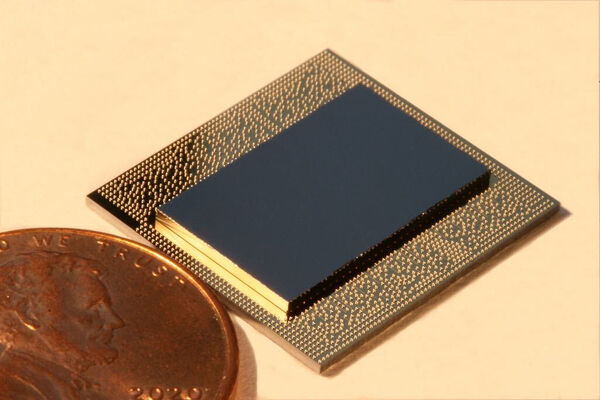
IBM Delivers Its Highest Quantum Volume to Date, Expanding the Computational Power of its IBM Cloud-Accessible Quantum Computers
"Company achieves a quantum volume of 64 through full-stack improvements Today, IBM has unveiled a new milestone on its quantum computing road map, achieving the company's highest Quantum Volume to date. Combining a series of new software and hardware techniques to improve overall performance, IBM has upgraded one of its newest 27-qubit client-deployed systems to achieve a Quantum Volume 64. The company has made a total of 28 quantum computers available over the last four years through IBM Quantum Experience. In order to achieve a Quantum Advantage, the point where certain information processing tasks can be performed more efficiently or cost effectively on a quantum computer, versus a classical one, it will require improved quantum circuits, the building blocks of quantum applications. Quantum Volume measures the length and complexity of circuits – the higher the Quantum Volume, the higher the potential for exploring solutions to real world problems across industry, government, and research. To achieve this milestone, the company focused on a new set of techniques and improvements that used knowledge of the hardware to optimally run the Quantum Volume circuits." [...]

Announcing TypeScript 4.0
"Today we are thrilled to announce the availability of TypeScript 4.0! This version of the language represents our next generation of TypeScript releases, as we dive deeper into expressivity, productivity, and scalability. If you’re not familiar with TypeScript, it’s a language that builds on top of JavaScript by adding syntax for static types. The idea is that by writing down the types of your values and where they’re used, you can use TypeScript to type-check your code and tell you about mistakes before you run your code (and even before saving your file). You can then use the TypeScript compiler to then strip away types from your code, and leaving you with clean, readable JavaScript that runs anywhere. Beyond checking, TypeScript also uses static types to power great editor tooling like auto-completion, code navigation, refactorings, and more." [...]

MediaTek Conduct World’s First Public Test of 5G Satellite IoT Data Connection with Inmarsat
"MediaTek’s satellite-enabled Narrowband (NB)-IoT standard chipset tested with base station at Fucino Space Center in Italy using Inmarsat’s ’Alphasat’ Geostationary Orbit (GEO) satellite MediaTek is pushing the boundaries of advanced IoT 5G satellite communications with a successful field trial that transfers data through Inmarsat’s Alphasat L-band satellite, in Geostationary Orbit (GEO) 35,000 kilometers above the equator. The results of MediaTek and Inmarsat’s IoT field test will be contributed to the 3rd Generation Partnership Project (3GPP)’s Rel-17 standardization work on Non-Terrestrial Network (NTN), which is part of its overarching initiative to establish 5G standards toward new use cases and services. The new 5G satellite NB-IoT technology established a bi-directional link from MediaTek’s satellite-enabled standard NB-IoT device to a commercial GEO satellite, breaking new ground for a truly global IoT coverage. The successful test builds the foundation for hybrid satellite and cellular networks to enable new ubiquitous 5G IoT services at a global scale. “MediaTek’s collaboration with Inmarsat will accelerate industry efforts to converge cellular and satellite networks in the 5G era. MediaTek is a leading connectivity provider and contributor to 3GPP standards, and our ongoing work with Inmarsat GEO satellites will help drive 5G innovation across verticals like IoT,” said Dr. Ho-Chi Hwang, MediaTek General Manager of Communication System Design." [...]
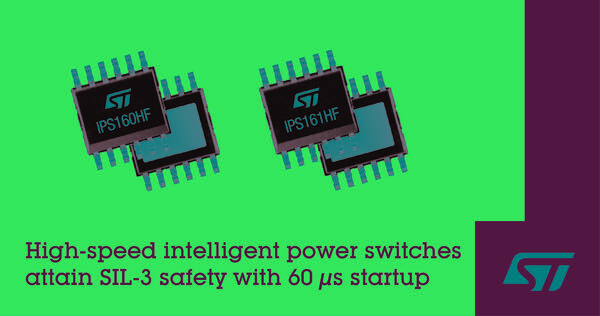
STMicroelectronics Reveals Fast-Starting Intelligent Power Switches for Demanding Safety Applications
"STMicroelectronics has added new fast-starting devices to its family of intelligent power switches for safety-instrumented systems. With power-on delay time of less than 60µs, the IPS160HF and IPS161HF satisfy standardized requirements for interface types C and D in Safety Integrity Level (SIL) Class 3 applications. Featuring a wide input-voltage range of 8V-60V, maximum switch resistance (RDS(on)) of 120mΩ, and10µs rise/fall time with 20µs propagation delay, these devices combine design flexibility, low power dissipation, and fast response. Extended diagnostics facilitate the design of safety-instrumented functions by indicating open load, over-current cut-off, and over-temperature shutdown. The IPS160HF and IPS161HF safely drive complex resistive, capacitive, and inductive loads with one side connected to ground, such as valves, relays, and lamps. In addition to SIL-rated applications such as safety sensors, they can be used in general factory-automation and process-control equipment such as Programmable Logic Controllers (PLCs), I/O peripherals, and Computer Numerical Control (CNC) machines." [...]
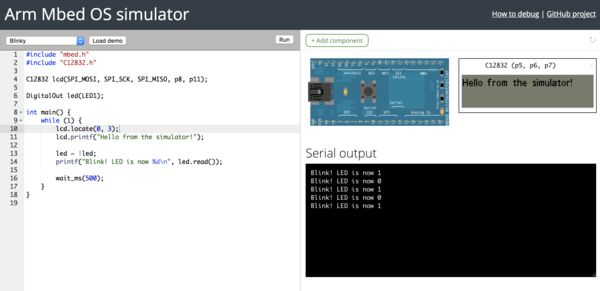
Mbed OS 6.2.1 released
"We are pleased to announce the Mbed OS 6.2.1 release is now available. Summary In this Mbed OS 6 patch release we have added support for the following new targets: Samsung Bioprocessor S1SBP6A target M252 custom board CYTFM_064B0S2 4343W Note the original M252 platform has been renamed to NUMAKER_IOT_M252. We have continued to progress our restructuring of the Mbed OS file hierarchy. A number of changes have been added for PSOC64. These include: Updating the TF-M release image Updating the TF-M release package Updating BSP startup code to match psoc6pdl-1.6.1 The STM32WB drivers have been updated to CUBE V1.7.0. We've updated the MTS_DRAGONFLY_F411RE bootloader to work with Mbed OS 6." [...]

China's CATL is developing new EV battery with no nickel, cobalt, exec says
"China’s Contemporary Amperex Technology Co Ltd (CATL), a Tesla supplier, is developing a new type of electric vehicle (EV) battery that contains no nickel or cobalt, a company executive said on Saturday. Nickel and cobalt are key ingredients in the batteries that power EVs. Battery makers from Japan’s Panasonic Corp to South Korea’s LG Chem are lowering the use of expensive cobalt in their nickel-cobalt-aluminium (NCA) batteries or nickel-cobalt-manganese (NCM) batteries. Tesla’s boss, Elon Musk, last month urged miners to produce more nickel, warning the current cost of batteries remained a big hurdle to the company’s growth. Ningde-based CATL makes NCM batteries and supplies lithium iron phosphate (LFP) batteries to Tesla. It has partnerships with Japan’s Toyota Motor and Honda Motor and supplies Germany’s Volkswagen AG (VOWG_p.DE) and Daimler AG." [...]

SpaceX successfully launches 11th Starlink mission using record-setting reused Falcon 9 booster
"SpaceX has successfully launched 58 more Starlink satellites for its growing internet broadband constellation. This is the eleventh batch of Starlink satellites to go up, bringing the total on orbit to well over 600. Today’s mission also carried three Planet satellites, and used a Falcon 9 first-stage booster that broke a record by flying for the sixth time. The launch took place at 10:31 AM EDT (7:31 AM PDT) from SpaceX’s launch site at Cape Canaveral Air Force Station in Florida. It also included a recovery attempt for the record-setting reused booster, which performed a sixth landing (also record setting) at sea on SpaceX’s “Of Course I Still Love You” floating drone landing barge. That successful recovery means that the booster can potentially be used yet again, breaking its own record set today." [...]
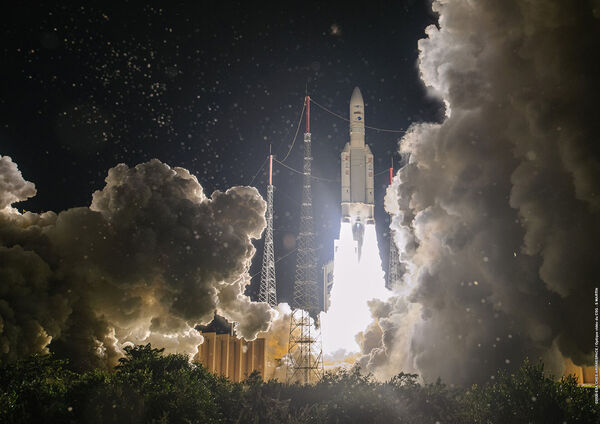
Ariane 5’s third launch of 2020
"Europe’s Ariane 5 has delivered two telecom satellites Galaxy-30 and BSAT-4B, and the Mission Extension Vehicle (MEV-2), into their planned transfer orbits. There are also four notable updates to the launch vehicle. Arianespace announced liftoff at 23:04 BST (00:04 CEST, 19:04 local time) this evening from Europe’s Spaceport in Kourou, French Guiana, for a mission lasting about 47 minutes. Galaxy-30, with a launch mass of 3298 kg, was the first to be released after about 27 minutes. The 2875 kg MEV-2, also housed in the upper berth of the fairing, was released about seven minutes later. Following a series of burns controlled by Ariane’s computer, the Sylda structure encasing the 3530 kg BSAT-4B was then jettisoned." [...]
Ciência e Tecnologia

How AI Is Accelerating MRI Scans
"Imagine you’re at the hospital, in pain and anxious about what diagnosis might be coming. Your doctor orders an MRI scan, which means waiting for an available time slot so you can lie perfectly still inside the scanner’s narrow tube for up to an hour. As the MRI machine gradually collects data, you have only the intermittent crackling and banging of the electric current in the scanner’s magnetic coils for company. If you move during the scan, the image might not be clear enough to be useful, which would mean booking another appointment to come back and do the whole thing over again. MRIs are often the best tool for diagnosing problems with organs, muscle, and other soft tissue. But even with recent advances, it takes a significant amount of time for the scanner to gather the necessary data." [...]

UCLA Computer Scientists Set Benchmarks to Optimize Quantum Computer Performance
"Two UCLA computer scientists have shown that existing compilers, which tell quantum computers how to use their circuits to execute quantum programs, inhibit the computers’ ability to achieve optimal performance. Specifically, their research has revealed that improving quantum compilation design could help achieve computation speeds up to 45 times faster than currently demonstrated. The computer scientists created a family of benchmark quantum circuits with known optimal depths or sizes. In computer design, the smaller the circuit depth, the faster a computation can be completed. Smaller circuits also imply more computation can be packed into the existing quantum computer. Quantum computer designers could use these benchmarks to improve design tools that could then find the best circuit design." [...]

A fix for foulants
"Researchers devise a practical solution for preventing corrosive CRUD buildup in nuclear systems. When clogs and corrosion threaten residential water and heating systems, homeowners can simply call a plumber to snake a drain or replace a pipe. Operators of nuclear power plants aren’t nearly so lucky. Metallic oxide particles, collectively known as CRUD in the nuclear energy world, build up directly on reactor fuel rods, impeding the plant’s ability to generate heat. These foulants cost the nuclear energy industry millions of dollars annually. This issue has vexed the nuclear energy industry since its start in the 1960s, and scientists have only found ways to mitigate, but not cure, CRUD buildup." [...]

3D printing ‘greener’ buildings using local soil
"The construction industry is currently facing two major challenges: the demand for sustainable infrastructure and the need to repair deteriorating buildings, bridges and roads. While concrete is the material of choice for many construction projects, it has a large carbon footprint, resulting in high waste and energy expenditure. Today, researchers report progress toward a sustainable building material made from local soil, using a 3D printer to create a load-bearing structure. The researchers will present their results today at the American Chemical Society (ACS) Fall 2020 Virtual Meeting & Expo. ACS is holding the meeting through Thursday. It features more than 6,000 presentations on a wide range of science topics." [...]
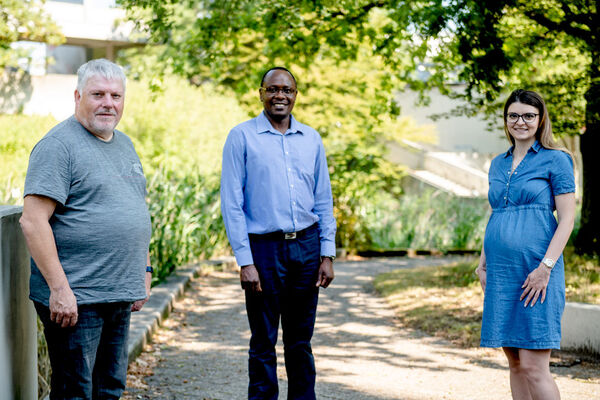
Challenges in the development of electrocatalysts
"Efficient catalysts are crucial for energy conversion. However, findings from basic research rarely make it into practice at present. Regenerative energy harvesting often generates more electricity than is directly needed. Electrochemical processes could be used to store the excess energy or make it usable. Although intensive research on the catalysts required for this has been going on for 20 years, progress is only being made in small steps. What would have to change in research to develop efficient, stable and selective catalysts for industrial application is described by Dr. Justus Masa of the Max Planck Institute for Chemical Energy Conversion, Professor Corina Andronescu of the University of Duisburg-Essen and Professor Wolfgang Schuhmann of Ruhr-Universität Bochum in a review article." [...]
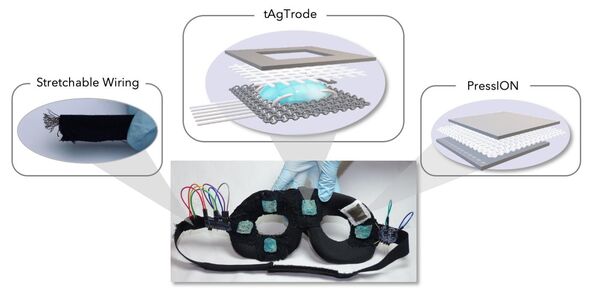
UMass Amherst Scientists Invent New Sensing Eye Mask
"Wearable soft mask will be useful for new, cutting-edge sleep and psycho-social studies From the team that invented physiology-sensing pajamas at the University of Massachusetts Amherst, now comes a new, lightweight eye mask that can unobtrusively capture pulse, eye movement and sleep signals, for example, when worn in an everyday environment. Senior authors writing this week in the journal Matter are materials chemist and Wearable Electronics Lab director Trisha L. Andrew, with computer scientist Deepak Ganesan and others. They point out that “being able to track pulse and eye movement in a single wearable device will enable a host of sleep and psycho-social studies, in addition to improving the accuracy and usability of gaming and virtual reality headsets.” First author S. Zohreh Homayounfar, will present the findings this week at the online Fall Meeting of the American Chemical Society. Recording health and behavior signals on or near the face is challenging, notes Andrew, “because most people are really sensitive and reactive to objects placed on their face or head.” Ganesan adds that “up to now, integrating many different sensing elements in one garment seemed burdensome, especially when it comes to small eye masks.” They say their lightweight, tailorable eye mask named “Chesma,” is fitted with two kinds of fabric electrodes that can simply be sewn onto a variety of pre-made garments and further miniaturized, if desired. This capability allows them to integrate electrodes into a lightweight foam mask for recording electro-oculography and cardiac signals. Their design automatically positions the electrodes on the face with no need for custom fitting." [...]

A quantum thermometer to measure the coldest temperatures in the universe
"Physicists from Trinity College Dublin have proposed a thermometer based on quantum entanglement that can accurately measure temperatures a billion times colder than those in outer space. These ultra-cold temperatures arise in clouds of atoms, known as Fermi gases, which are created by scientists to study how matter behaves in extreme quantum states. The work was led by the QuSys team at Trinity with postdoctoral fellows, Dr Mark Mitchison, Dr Giacomo Guarnieri and Professor John Goold, in collaboration with Professor Steve Campbell (UCD) and Dr Thomas Fogarty and Professor Thomas Busch working at OIST, Okinawa, Japan. Discussing the proposal, Professor Goold, head of Trinity’s QuSys group, explains what an ultra-cold gas is. He said: “The standard way in which a physicist thinks about a gas is to use a theory known as statistical mechanics. This theory was invented by giants of physics such as Maxwell and Boltzmann in the 19thcentury." [...]
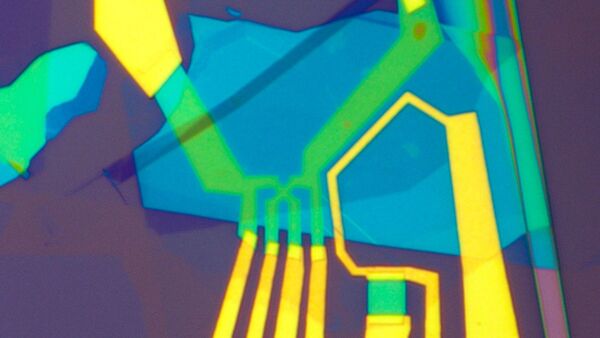
Graphene sensors find subtleties in magnetic fields
"As with actors and opera singers, when measuring magnetic fields it helps to have range. Cornell researchers used an ultrathin graphene “sandwich” to create a tiny magnetic field sensor that can operate over a greater temperature range than previous sensors, while also detecting miniscule changes in magnetic fields that might otherwise get lost within a larger magnetic background. The group’s paper, “Magnetic Field Detection Limits for Ultraclean Graphene Hall Sensors,” published Aug. 20 in Nature Communications. The team was led by Katja Nowack, assistant professor of physics in the College of Arts and Sciences and the paper’s senior author. Nowack’s lab specializes in using scanning probes to conduct magnetic imaging. One of their go-to probes is the superconducting quantum interference device, or SQUID, which works well at low temperatures and in small magnetic fields." [...]
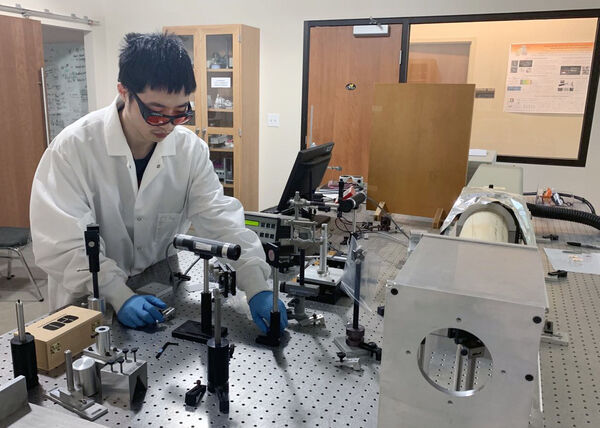
Clemson researchers shed light on the building blocks for next-generation LED displays
"Three teams of researchers at Clemson University have joined forces to unravel some of the mysteries surrounding perovskite nanocrystals, which are semiconductors with numerous applications, including LEDs, lasers, solar cells and photodetectors. A research article titled “The correlation between phase transition and photoluminescence properties of CsPbX3 (X=Cl, Br, I) perovskite nanocrystals” recently appeared in Nanoscale Advances, an open-access journal published by the Royal Society of Chemistry. The article’s lead author is Jun Yi and the second author is Xueying Ge, who were students working with Apparao Rao, the Robert Adger Bowen Professor of Physics at Clemson University. The third author is Exian Liu, who was working with Jianbo Gao, an assistant professor in the College of Science’s department of physics and astronomy. “We are always on the hunt for students to work on challenging projects,” said Rao, a professor in the department of physics and astronomy and director of the Clemson Nanomaterials Institute. “Jun started this project about a year ago, and our teams worked together and ended up with a nice piece of work." [...]

UCL engineers set new world record internet speed
"The world’s fastest data transmission rate has been achieved by a team of UCL engineers who reached an internet speed a fifth faster than the previous record. Working with two companies, Xtera and KDDI Research, the research team led by Dr Lidia Galdino (UCL Electronic & Electrical Engineering), achieved a data transmission rate of 178 terabits a second (178,000,000 megabits a second) – a speed at which it would be possible to download the entire Netflix library in less than a second. The record, which is double the capacity of any system currently deployed in the world, was achieved by transmitting data through a much wider range of colours of light, or wavelengths, than is typically used in optical fibre. (Current infrastructure uses a limited spectrum bandwidth of 4.5THz, with 9THz commercial bandwidth systems entering the market, whereas the researchers used a bandwidth of 16.8THz.) To do this, researchers combined different amplifier technologies needed to boost the signal power over this wider bandwidth and maximised speed by developing new Geometric Shaping (GS) constellations (patterns of signal combinations that make best use of the phase, brightness and polarisation properties of the light), manipulating the properties of each individual wavelength. The achievement is described in a new paper in IEEE Photonics Technology Letters." [...]
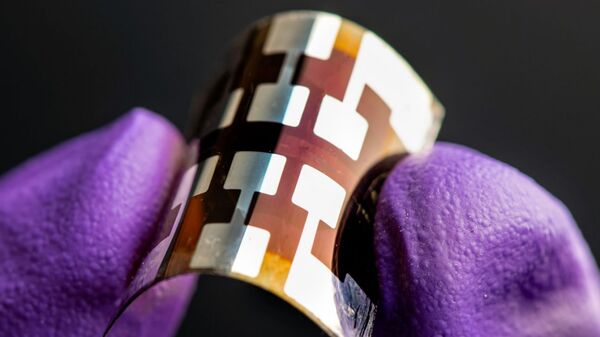
Perovskite mineral supports solar-energy sustainability
"When it comes to the future of solar energy cells, say farewell to silicon, and hello to calcium titanium oxide – the compound mineral better known as perovskite. Cornell engineers have found that photovoltaic wafers in solar panels with all-perovskite structures outperform photovoltaic cells made from state-of-the-art crystalline silicon, as well as perovskite-silicon tandem (stacked pancake-style cells that absorb light better) cells. In addition to offering a faster return on the initial energy investment than silicon-based solar panels, all-perovskite solar cells mitigate climate change because they consume less energy in the manufacturing process, according to Cornell research published July 31 in Science Advances. “Layered tandem cells for solar panels offer more efficiency, so this is a promising route to widespread deployment of photovoltaics,” said Fengqi You, the Roxanne E. and Michael J. Zak Professor in Energy Systems Engineering in the College of Engineering. “Specifically, perovskites enable affordable and efficient solar panel fabrication,” he said. “Our paper is a thorough energy and environmental assessment of these perovskite-based tandem solar cells, as we try to chart a path for the more sustainable photovoltaics.” The paper, “Life Cycle Energy Use and Environmental Implications of High-Performance Perovskite Tandem Solar Cells,” compares energy and life-cycle environmental impacts of modern tandem solar cells made of silicon and perovskites." [...]

Mathematical tool helps calculate properties of quantum materials more quickly
"Many quantum materials have been nearly impossible to simulate mathematically because the computing time required is too long. Now a joint research group at Freie Universität Berlin and the Helmholtz-Zentrum Berlin (HZB) has demonstrated a way to considerably reduce the computing time. This could accelerate the development of materials for energy-efficient IT technologies of the future. Supercomputers around the world work around the clock on research problems. In principle, even novel materials can be simulated in computers in order to calculate their magnetic and thermal properties as well as their phase transitions. The gold standard for this kind of modelling is known as the quantum Monte Carlo method." [...]

Scientists Created a New Type of Materials for Energy of the Future
"UrFU and Sathyabama Institute scientists have introduced a facile chemical method for preparation of highly stable perovskite materials in large-scale for commercial purpose. The world's first method of industrial synthesis of highly stable perovskites was developed by scientists from the Department of Magnetism and Magnetic Nanomaterials of the Ural Federal University, together with colleagues from India. This opens up the possibility of effective use of these substances, recognized by Science as a breakthrough material, in energy and electronics, according to RIA News Agency. The results are published in the journal Materials Science in Semiconductor Processing. Perovskites are a class of minerals with a pseudo-cubic crystal structure. Since 2012, according to scientists, perovskites have been actively studied as an extremely promising material for a number of areas, especially for solar energy." [...]
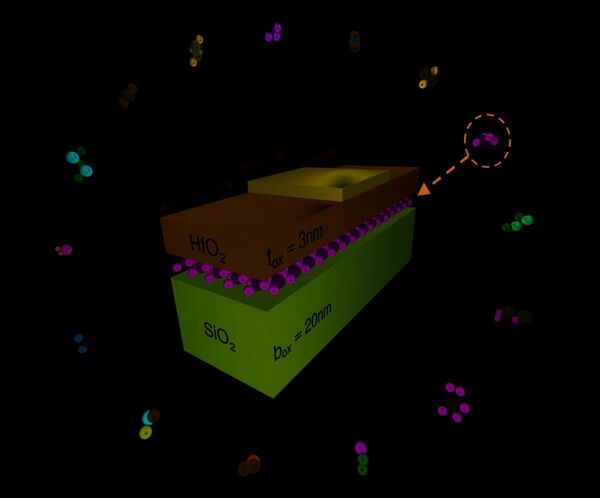
2-D materials for ultrascaled field-effect transistors: One hundred candidates under the ab initio microscope
"Researchers led by Mathieu Luisier from the Institute for Integrated Systems (IIS) at ETH Zurich and NCCR MARVEL's Director Nicola Marzari at EPFL have set out to develop a comprehensive atlas of 2-D materials that might be capable of challenging currently manufactured silicon-based transistors, so-called Si FinFETs. The new simulations are based on earlier results from Marzari and his team, who used complex simulations on the Swiss National Supercomuting Centre's supercomputer "Piz Daint" to sift through a pool of more than 100,000 materials to identify 1,825 from which it might be possible to obtain 2-D layers of material. The paper 2‑D Materials for Ultrascaled Field-Effect Transistors: One Hundred Candidates under the Ab Initio Microscope, recently published in the journal ACS Nano, identifies 13 particularly promising candidates. The functionality of electronic devices has been growing for more than five decades straight thanks to the continued miniaturization of transistors—the relevant areas of the silicon Finfield-effect transistors (FinFETs) now being produced are no more than a couple of nanometers in any direction. While this miniaturization is driving performance, manufacturing them is extremely difficult and gives rise to strong quantum mechanical effects such as inter/intra-band tunneling that might negatively impact their switching performance. Resulting ultrashort gate lengths also mean that maintaining good electrostatic properties has become difficult, even with multigate architectures." [...]

New Superlattice Material for Future Energy Efficient Devices
"A team of international physicists including Jennifer Cano, PhD, of Stony Brook University, has created a new material layered by two structures, forming a superlattice, that at a high temperature is a super-efficient insulator conducting current without dissipation and lost energy. The finding, detailed in a paper published in Nature Physics, could be the basis of research leading to new, better energy efficient electrical conductors. The material is created and developed in a laboratory chamber. Over time atoms attach to it and the material appears to grow – similar to the way rock candy is formed. Surprisingly, it forms a novel ordered superlattice, which the researchers test for quantized electrical transport. The research centers around the Quantum Anomalous Hall Effect (QAHE), which describes an insulator that conducts dissipationless current in discrete channels on its surfaces." [...]

USU Mathematicians Unravel a Thread of String Theory
"Simply put, string theory is a proposed method of explaining everything. Actually, there’s nothing simple about it. String theory is a theoretical framework from physics that describes one-dimensional, vibrating fibrous objects called “strings,” which propagate through space-time and interact with each other. Piece by piece, energetic minds are discovering and deciphering fundamental strings of the physical universe using mathematical models. Among these intrepid explorers are Utah State University mathematicians Thomas Hill and his faculty mentor, Andreas Malmendier. With colleague Adrian Clingher of the University of Missouri-St. Louis, the team published findings about two branches of string theory in the paper, “The Duality Between F-theory and the Heterotic String in D=8 with Two Wilson Lines,” in the August 7, 2020 online edition of Letters in Mathematical Physics." [...]

Artificial materials for more efficient electronics
"The discovery of an unprecedented physical effect in a new artificial material marks a significant milestone in the lengthy process of developing “made-to-order” materials and more energy-efficient electronics. We are surrounded by electronic devices. Transistors are used to power telephones, computers, televisions, hi-fi systems and game consoles as well as cars, airplanes and the like. Today’s silicon-based electronics, however, consume a substantial and ever-increasing share of the world’s energy. A number of researchers are exploring the properties of materials that are more complex than silicon but that show promise for the electronic devices of tomorrow – and that are less electricity-hungry. In keeping with this approach, scientists from the University of Geneva (UNIGE) have been working in collaboration with the Swiss Federal Institute of Technology in Lausanne (EPFL), the University of Zurich, the Flatiron Institute of New York and the University of Liège." [...]

New quantum paradox reveals contradiction between widely-held beliefs
"Quantum physicists at Griffith University have unveiled a new paradox that says, when it comes to certain long-held beliefs about nature, “something’s gotta give”. Quantum theory is practically perfect at predicting the behaviour we observe when we perform experiments on tiny objects like atoms. But applying quantum theory at scales much larger than atoms, in particular to observers who make the measurements, raises difficult conceptual issues. In a paper published in Nature Physics, an international team led from Griffith University in Australia has sharpened those issues into a new paradox. “The paradox means that if quantum theory works to describe observers, scientists would have to give up one of three cherished assumptions about the world,” said Associate Professor Eric Cavalcanti, a senior theory author on the paper. “The first assumption is that when a measurement is made, the observed outcome is a real, single event in the world." [...]
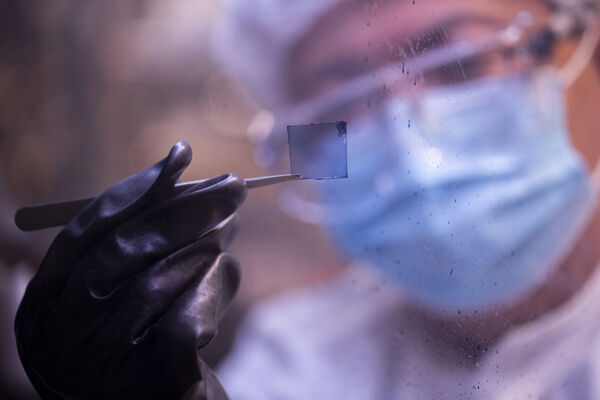
Transparent solar panels for windows hit record 8% efficiency
"In a step closer to skyscrapers that serve as power sources, a team led by University of Michigan researchers has set a new efficiency record for color-neutral, transparent solar cells. The team achieved 8.1% efficiency and 43.3% transparency with an organic, or carbon-based, design rather than conventional silicon. While the cells have a slight green tint, they are much more like the gray of sunglasses and automobile windows. Windows, which are on the face of every building, are an ideal location for organic solar cells because they offer something silicon can’t, which is a combination of very high efficiency and very high visible transparency “Windows, which are on the face of every building, are an ideal location for organic solar cells because they offer something silicon can’t, which is a combination of very high efficiency and very high visible transparency,” said Stephen Forrest, the Peter A. Franken Distinguished University Professor of Engineering and Paul G. Goebel Professor of Engineering, who led the research. Buildings with glass facades typically have a coating on them that reflects and absorbs some of the light, both in the visible and infrared parts of the spectrum, to reduce the brightness and heating inside the building. Rather than throwing that energy away, transparent solar panels could use it to take a bite out of the building’s electricity needs." [...]
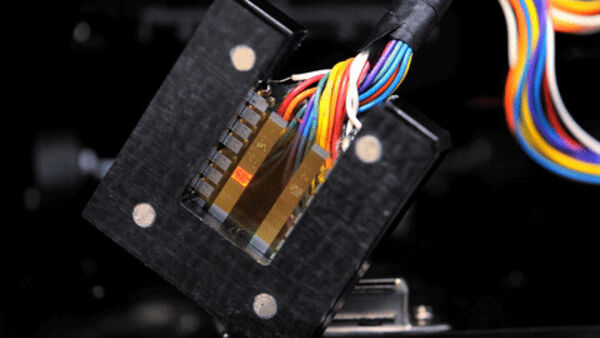
Controlling heat opens door for next-generation lighting and displays in perovskite LEDs
"Light-emitting diodes, or LEDs, are nearly ubiquitous in modern life, providing the brightness in phone displays, televisions, and lights. A new form of LEDs, made of a class of materials called halide perovskites, promises higher color quality and ease of manufacture, but has been known to fail when subjected to the kind of electrical current typically needed for practical uses. Now, Barry Rand, associate professor of electrical engineering and the Andlinger Center for Energy and the Environment, and a team of researchers have significantly improved the material’s stability and performance by better managing the heat generated by the LEDs. The research, published in Advanced Materials, identifies several techniques that reduce the accumulation of heat within the material, which extended its lifetime tenfold. When the researchers prevented the device from overheating, they were able to pump enough current into it to produce light hundreds of times more intense than a typical cell phone display. The intensity, measured in watts per square meter, reflects the real amount of light coming from a device, uninfluenced by human eyes or the color of the light." [...]
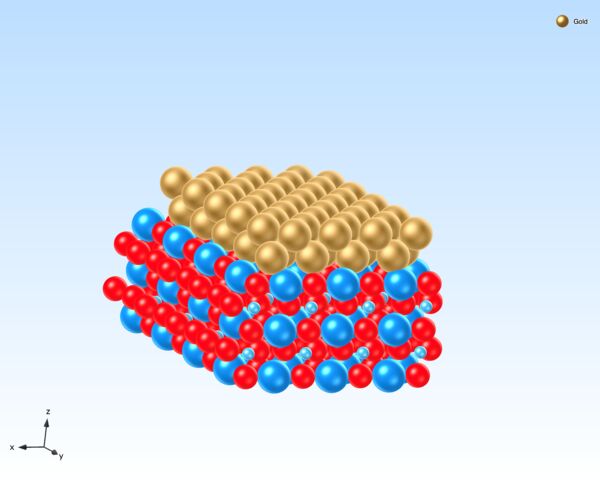
A touch of gold sends crystals electric with excitement
"A touch of gold - or another noble metal – can change the structure of a crystal and its intrinsic properties, physicists at the University of Warwick have demonstrated in a display of modern-day alchemy. Scientists from the Department of Physics and WMG at the University of Warwick have found a way to induce electric effects in crystals that they were not previously capable of, such as converting movement or heat into electricity, simply by adding a piece of metal to their surface. Their method is detailed in a new paper published today (19 August) in Nature and demonstrates that the effects can be a greater magnitude than conventionally studied bulky materials making it ideal for use in technologies such as sensors, energy conversion and mobile technologies. The key to the technique is in breaking the symmetry of the crystal’s structure. A crystal can be made from a number of different atoms, but the term describes an ordered structure of particles that form a symmetric pattern. Professor Marin Alexe, co-lead author from the Department of Physics at the University of Warwick, said: “In physics, those materials are rather boring." [...]

Breakthrough extends quantum state stability by 10,000 times
"Scientists in Chicago have developed a way to keep quantum states operating for longer periods of time -- a breakthrough they say could accelerate the development of quantum communication, computing and sensing. Hundreds of studies have hinted at the power of quantum mechanics, and scientists have predicted quantum technologies will provide a speed boost to computers, beef up cyber security, enhance the resolution of astronomical images and more. For now, however, these applications remain relegated to the realm of theory. While scientists have successfully created quantum systems, they have proven delicate, unstable and frequently finicky. One of the challenges of building useful quantum technologies is that most quantum systems remain operational, or "coherent," for extremely brief periods of time, scientists say. But, according to a study published this week in the journal Science, researchers at the University of Chicago claim to have developed a tweak that helps quantum states work 10,000 times longer than before." [...]

Stanford scientists slow and steer light with resonant nanoantennas
"Researchers have fashioned ultrathin silicon nanoantennas that trap and redirect light, for applications in quantum computing, LIDAR and even the detection of viruses. Light is notoriously fast. Its speed is crucial for rapid information exchange, but as light zips through materials, its chances of interacting and exciting atoms and molecules can become very small. If scientists can put the brakes on light particles, or photons, it would open the door to a host of new technology applications. Now, in a paper published on Aug. 17, in Nature Nanotechnology, Stanford scientists demonstrate a new approach to slow light significantly, much like an echo chamber holds onto sound, and to direct it at will. Researchers in the lab of Jennifer Dionne, associate professor of materials science and engineering at Stanford, structured ultrathin silicon chips into nanoscale bars to resonantly trap light and then release or redirect it later." [...]
Black silicon photodetector breaks the 100% efficiency limit
"The efficiency was so high that at first the researchers had a hard time believing the result. Now Aalto University spin-off company ElFys Inc. already supplies the record detectors for several industry sectors. Aalto University researchers have developed a black silicon photodetector that has reached above 130% efficiency. Thus, for the first time, a single photovoltaic device has exceeded the 100% external quantum efficiency limit at UV. This result opens new avenues for improving efficiencies beyond the famous Shockley-Queisser limit. 'When we saw the results, we could hardly believe our eyes." [...]
Documentação
A documentação é parte essencial do processo de aprendizagem e a Internet além de artigos interessantes de explorar também tem alguma documentação em formato PDF interessante de ler. Todos os links aqui apresentados são para conteúdo disponibilizado livremente pelo editor do livro.
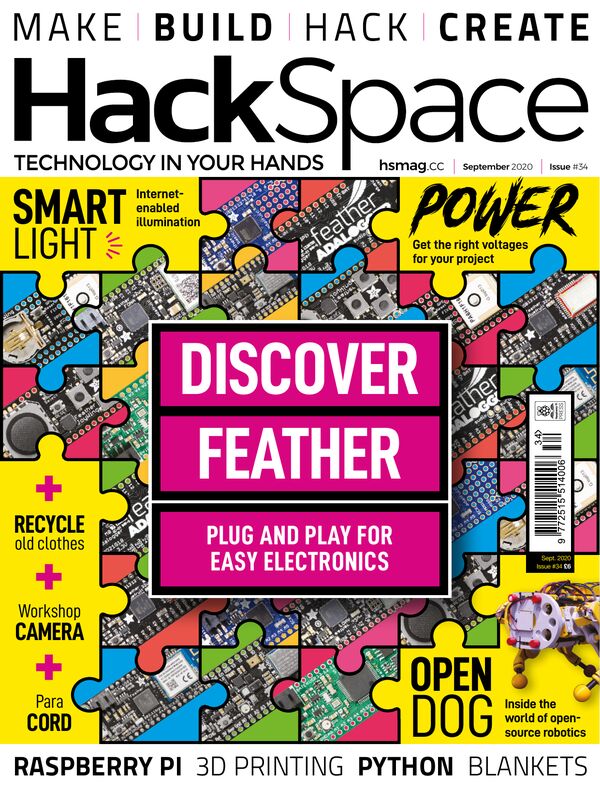
HackSpace magazine #34
"Discover the Feather ecosystem that makes the electronics of your projects as simple as slotting the different modules together. Also inside, we find out what it take to build a full-sized open source robotic dog from YouTube sensation James Bruton and much more. Circuit Python 3D printing with silk PLA Make (almost) anything with paracord Learning PCB design" [...]

Architecting Modern Web Applications with ASP.NET Core and Azure
"This guide provides end-to-end guidance on building monolithic web applications using ASP.NET Core and Azure. In this context, “monolithic” refers to the fact that these applications are deployed as a single unit, not as a collection of interacting services and applications. This guide is complementary to the “.NET Microservices. Architecture for Containerized .NET Applications” which focuses more on Docker, Microservices, and Deployment of Containers to host enterprise applications. " [...]
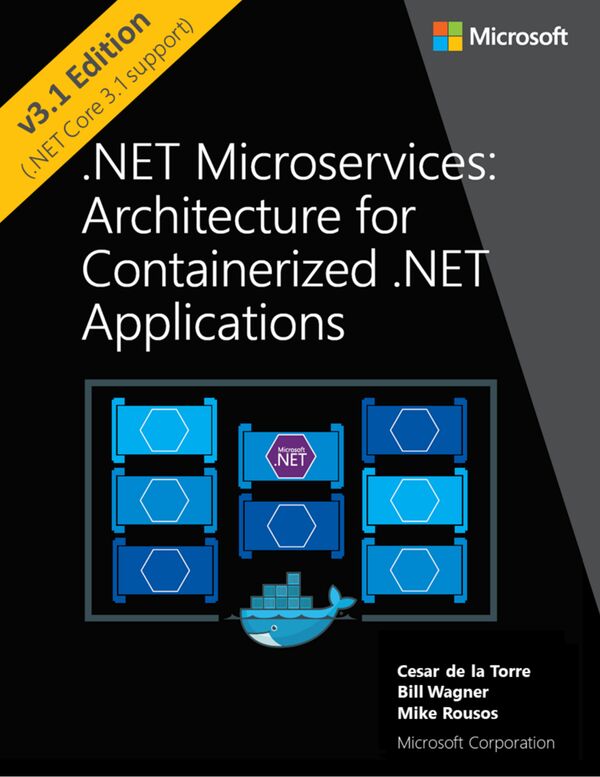
.NET Microservices Architecture for Containerized .NET Applications
"This guide is an introduction to developing microservices-based applications and managing them using containers. It discusses architectural design and implementation approaches using .NET Core and Docker containers. To make it easier to get started, the guide focuses on a reference containerized and microservicebased application that you can explore. The reference application is available at the eShopOnContainers GitHub repo. " [...]

Serverless apps: Architecture, atterns, and Azure implementation
"This guide focuses on cloud native development of applications that use serverless. The book highlights the benefits and exposes the potential drawbacks of developing serverless apps and provides a survey of serverless architectures. Many examples of how serverless can be used are illustrated along with various serverless design patterns. This guide explains the components of the Azure serverless platform and focuses specifically on implementation of serverless using Azure Functions. You’ll learn about triggers and bindings as well as how to implement serverless apps that rely on state using durable functions. Finally, business examples and case studies will help provide context and a frame of reference to determine whether serverless is the right approach for your projects." [...]

gRPC for WCF Developers
"This guide was written for developers working in .NET Framework or .NET Core who have previously used WCF and who are seeking to migrate their applications to a modern RPC environment for .NET Core 3.0 and later versions. The guide may also be of use more generally for developers upgrading or considering upgrading to .NET Core 3.0 who want to use the built-in gRPC tools. " [...]

Architecting Cloud Native .NET Apps for Azure
"This guide begins by defining cloud native and introducing a reference application built using cloudnative principles and technologies. Beyond these first two chapters, the rest of the book is broken up into specific chapters focused on topics common to most cloud-native applications. You can jump to any of these chapters to learn about cloud-native approaches to: - Data and data access - Communication patterns - Scaling and scalability - Application resiliency - Monitoring and health - Identity and security - DevOps" [...]
Projetos Maker
Diversos Projetos interessantes.

Pocket Distance Alarm V2 - Seeeduino XIAO
"According to a press release from the Ministry of Health on Thursday, Singapore has announced stiff fines and jail for those who do not observe social distancing measures put in place to contain the coronavirus outbreak. People who do not observe physical distancing of one meter in “non-transient” interactions can be fined up to 10, 000 Singapore dollars ($6, 985) or be jailed up to six months, or face both penalties. Such interactions include people on seats not fixed to the floor, who intentionally sit less than one meter from another seated individual in a public place. People standing in a queue in public places who are less than one meter away from the next person will also be prosecuted, according to the rules. It is necessary in this critical period to keep a distance from others. However, it is not that easy to keep this in mind every second or remind those careless people who used to be too close with others." [...]
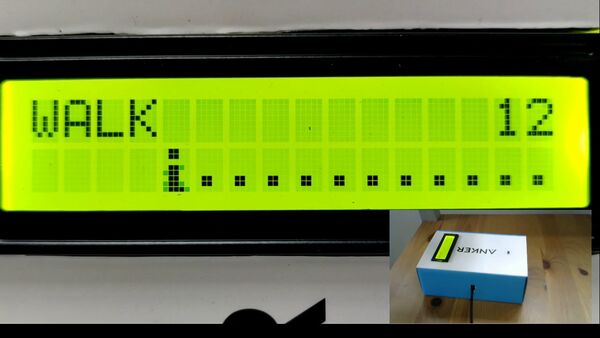
Intangible Surface
"Intangible Surface is a gesture and IoT based touchless interface to interact with the digital world. 1. What Problem I am Trying to Solve? A button is the most common interface to interact with the digital world. It could be as simple as a light switch or at a pedestrian crossing or it could be as complex as in the elevator or a kiosk. These buttons can act as a catalyst in the spread of viruses." [...]

Melody
"Alongside the many advantages and technological solutions that allow work from home, the difficulty of formulating and creating life support among co-workers remains. MELODY is a digital-physical device that enables the creation of collaborative short musical jams. Co-workers coordinate time and the device sets a jam session with turns and different random sounds. The first participant sets a specific rhythm, after which each participant adds their own musical section corresponding to the set rhythm. In order to make it easier for users with no musical background, the software helps them keep pace by sampling their clicks and adjusting to the appropriate rhythm. The session ends after about 3 minutes when all participants have finished recording their part." [...]
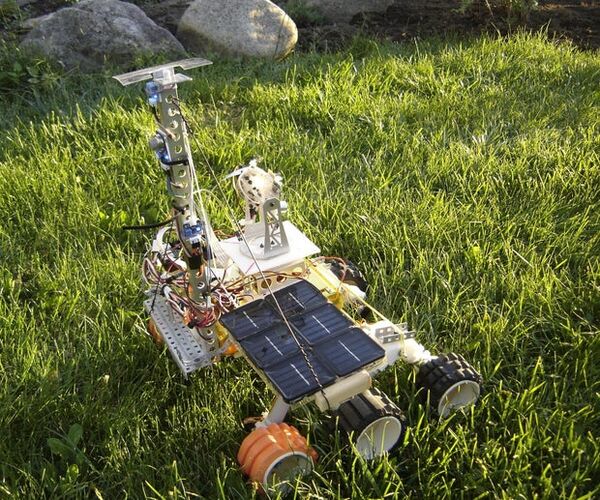
Ideas for Your Own (Backyard) Mars Rover
"2019 was a sad year for robotics and space enthusiasts alike as the Opportunity rover 'died' on Mars after a record-breaking 15 years of operation. This Instructable describes our journey in the construction of a rover based on the mentioned marvel of engineering. It makes a great summer project and can be endlessly elaborated upon until you reach a machine with a complexity rivaling Curiosity or Opportunity. The project took us (a group of 3 high school students) about a week and a half to complete, with an average of around 1.5 hours of work per day. Keep in mind, however, that we were often improvising the design and therefore experienced errors that you can avoid. The finished rover operates great on almost all surfaces, but the wheel design makes it optimal for outdoor operation." [...]

Getting Your Board Ready for AppShed IoT
"In this quick lesson, we are going to take a look at how to get your NodeMCU flashed with AppShed IoT firmware allowing it to be used with the AppShed IoT platform and collection of Apps. The AppShed IoT platform is a platform that allows users to quickly and easily create their own custom app and program that app to interact with the NodeMCU IoT board. Users can build apps at any skill level on appshed.com. The focus of this lesson is not on the app-building side but rather setting up your board to work with AppShed IoT platform. " [...]

Clap-on Switch
"A relative asked me one time if i could create a switch that reacts to clapping your hands. So i've orderd some stuff to create a project and decided to make a instructable so everyone could have a awesome switch like that. The microcontroller is the brain of this project. A sound sensor is connected to the microcontroller, the sensor is sending analog data when sound is detected. The microcontroller is programmed to detect large differences in sound. When a high enough difference is detected, meaning a clap, the microcontroller sends a signal to the relay." [...]
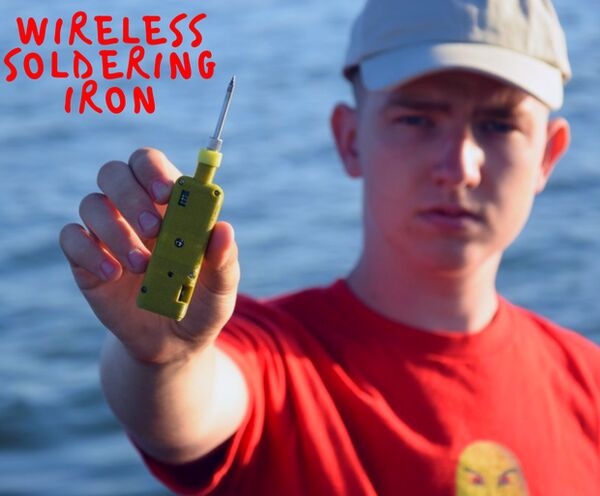
Wireless Soldering Iron
"Wireless soldering iron - that sounds weird. Sometimes I feel like soldering outdoors, but I can't take my soldering station outside. I bought a USB soldering iron, which worked quite well, but needed a little modification, because what if I want to solder outdoors? In the middle of the lake? So I decided to make a wireless soldering iron. Will it work?" [...]
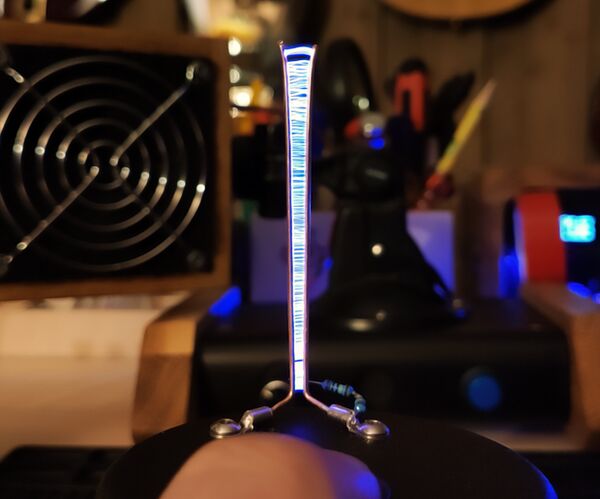
Mini High Voltage Jacob's Ladder
"Today's build is really simple but really cool looking miniature high voltage Jacob's ladder. We assemble "15KV high voltage generator kit", get some basic working principles about Jacob's ladder and maybe some more general tips and tricks. Heart of the build is cheap 15KV high voltage generator kit, i bought it online for about 1.5.- USD. Total budget on parts was around 2..3USD :) You can run it on single 18650 battery but i chose dc jack (At the moment the prices of batteries are too high). Caution! High voltage can be deadly!" [...]

3D Printed Magnatic Stirrer
"Hello readers this is a small project I had done over the weekend. I needed a magnatic stirrer at work, but because of some circumstances we couldn't order one. So I thought why shouldn't I build one by myself. I designed this thing with Inventor 2018. This kind of machine is used in laboratories for mixing two or more seperate substances in a long time span. But you can also use it for removing PVA from your 3D printed parts." [...]
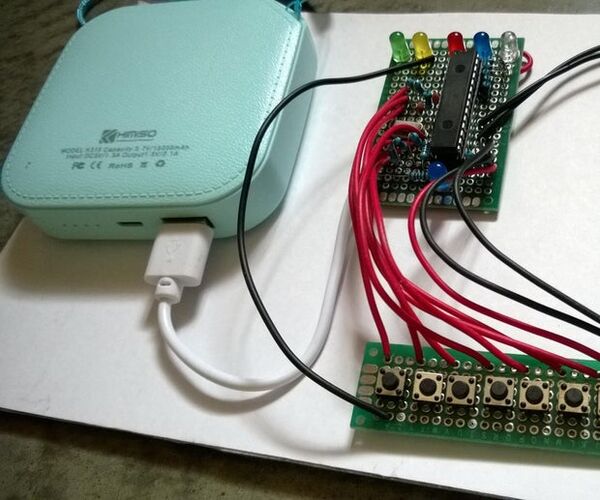
Awit-10: a Singing Music, a Dancing Light.
"The Name Awit-10 is derived from a Filipino Word, "Awitin" (Pronounced: Uh-weet-tin) which means "To sing". Awit-10 is composed of ten of my favorite songs: 1. Cry by Mandy Moore 2. Heaven by Bryan Adams 3. I see the Light by Mandy Moore 4. I wont last the day without you by The Carpenters 5." [...]

EPA UV Index Feed / IOT
"This little device pulls your local UV index from EPA and display the UV level in 5 different colors and also displays details on the OLED. UV 1-2 is Green, 3-5 is Yellow, 6-7 is Orange, 8-10 is Red, 11+ is purple. Supplies: Adafruit Feather M0 WiFi – ATSAMD21 + ATWINC1500 350 Mah Lipo One NeoPixel A server that can run php script with a Internet connection 3D printed parts (attached)" [...]
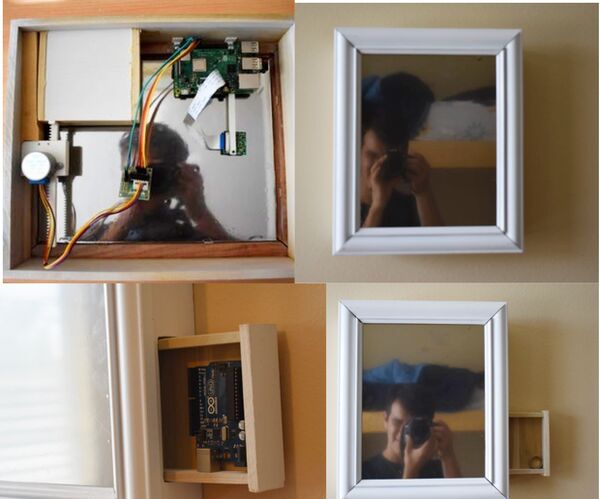
Facial Recognition Mirror With Secret Compartment
"I've always been intrigued by the ever-creative secret compartments used in stories, movies, and the like. So, when I saw the Secret Compartment Contest I decided to experiment with the idea myself and make an ordinary looking mirror that opens a secret side drawer when the right person looks into it. By utilizing a Raspberry Pi, some knowledge of python programming, and 8th-grade shop class, we can create this spiffy device to hide objects in plain sight that only the correct user will have access to. I would like to give a special thanks to these people/platforms where I got my information and resources from as well: TeCoEd - Youtube Channel Emmet from PiMyLifeUp MJRoBot on Hackster.io (profile) Gaven MacDonald - Youtube Channel Tucker Shannon on Thingiverse (profile) Supplies: Frame Supplies: Wood Plank (The dimensions of this board was 42" by 7.5" by 5/16") Pencil Picture Frame (with glass) Spray Paint One Way Reflective Adhesive Glass Cleaner & Rag MDF Wood Facial Recognition Supplies: Raspberry Pi (I used the Pi 3 B+ but there are other options) Camera Module Stepper Motor Tools: Table Saw Jig Saw SandpaperWood GlueTape Measure Scissors Spray Bottle 3D Printer Super Glue" [...]

Electronic Puzzle Box With Secret Compartment
"The goal of this instructable is to create a simple lockable box that can be opened by solving a puzzle. The puzzle must be interesting, easy to understand and it must be possible to solve it with the help of a pen and paper (or straight from the head). The system will be controlled by arduino. This project is inspired by the game Submachine 1: The Basement, created by Mateusz Skutnik. It's a logical adventure, released in 2005 and I've enjoyed the whole series since I was a kid. Original version is very simple." [...]
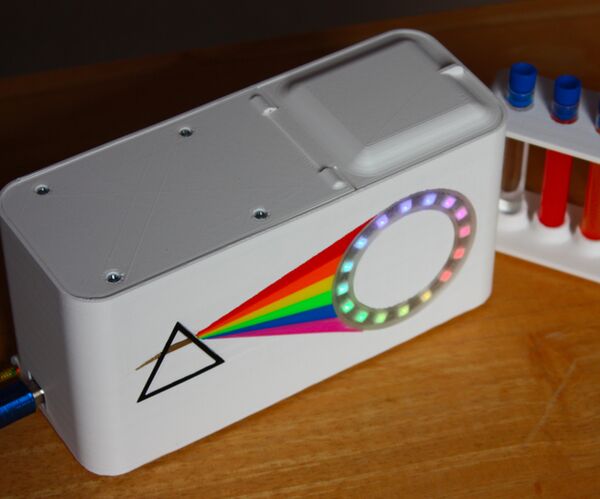
Science With Rainbows! - Spectrophotometry
"Rainbows, natural phenomena that produce beautiful spectrums of coloured light in the sky, inspire myth and legend and art and give happiness to millions of people. Just as natural rainbows are created by how sunlight plays through water droplets in the atmosphere, we can artificially create our own rainbows using prisms. There are many scientific applications of rainbows, and one is 'Spectrophotometry'! A spectrophotometer is a scientific instrument used to measure how different wavelengths of light (the different colours of light seen in the rainbow are different wavelengths) are absorbed by a sample. This analysis can tell us all sorts of things, and these instruments (first made in the 1940s) have played a huge role in modern science, especially biochemistry. In this Instructable, we're going to make a basic Arduino-powered spectrophotometer, using a little prism to create and use our own rainbow." [...]

Tap Tap Rainbow - a 2 Player Quick Reaction Game
"2 weeks ago my daughter had a genius idea to make a quick reaction game with rainbow colors (she's a rainbow expert :D ). I instantly loved the idea and we started thinkering how we could make it into a real game. The idea was. You have a rainbow in randomly shuffled colors and the challenge is to sort the colors as fast as possible into a beautiful rainbow. I had some RGB leds and a bunch of arcade buttons laying around so that would be perfect to make it into reality. As the brains of the game I choose an Espruino." [...]
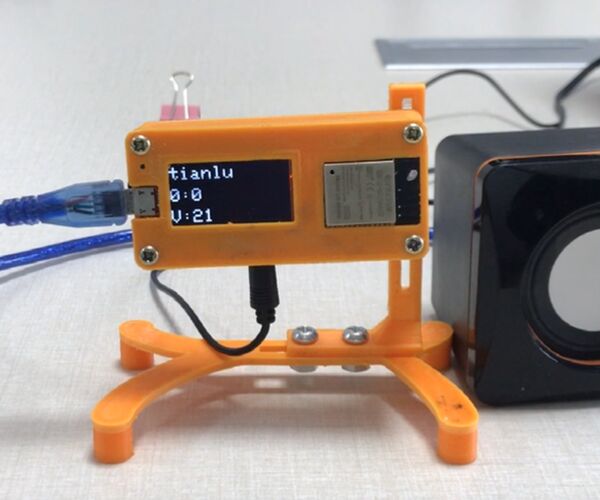
ESP32 Audio Player
"Due to the epidemic, I spent more time at home than usual in the past six months. It is inevitable that a person would be bored at home, so I made an audio player with ESP32 to pass the time. ESP32 can be used as an independent system to run applications, just plug in the cable, power the device, and program it. With downloading different programs, the player can realize SD card playing music function, Internet radio function, and music alarm clock function. Now I want to show my results and tell you how to do it. Supplies: Hardware: - MakePython ESP32 - MakePython Audio - Micro SD card - USB cable - Audio/headphones with 3.5mm audio connector Software: - Arduino IDE - Download music (.mp3 or .wav) to the SD card." [...]

How to Make Clap ON/OFF Switch || Without Any IC
"This Is A Clap ON Of Switch Without Any IC. You Can Clap First Time Then The Light Bulb ON And Clap Second Time The Light Bulb OFF. This Circuit Based On SR Flip-flop. Components 1. BC547 NPN Transistors (4pcs) 2. 10k Resistors (5pcs) 3." [...]
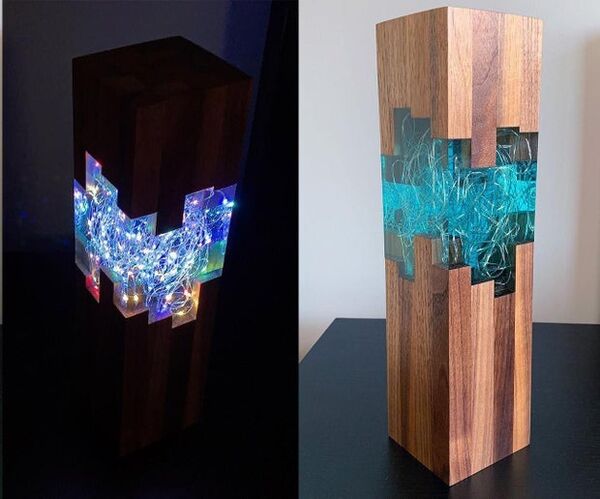
Epoxy Resin and Walnut LED Night Lamp
"This time I had the main goal to try a very first-time epoxy resin casting. I’ll show you how from epoxy resin, American walnut, and cheap electronics I made this stunning LED night lamp. How I did it - you can check by looking DIY video or you can follow up instructions bellow. For this project you will need: Materials: Walnut 20x20x120mm and 20x20x200 ( or other your preferred wood) Wood glue, CA glue Transparent epoxy resing for deep casting Fairy string LED light Plastic sheets for casting form (mold) Hot glue Micro USB connector Buffing pad and automotive polishing paste Danish oil for wood finish Sandpaper 400, 800, 1000, 1500 grit. Electric tape Tools: Belt sander with 80 grit sandpaper Miter saw Palm router Orbital sander with 120, 240 and 320 grit sandpaper Drill and bits Clamps and some other usual bits and bobs which is laying around the workshop. Cutters Soldering iron and solder" [...]

ESP-01 Programmer Hack - the Easy One :)
"Hi ESPers, In this instructable I'll be showing you a simple hack to make a programmer for ESP-01 / ESP8266-01 / ES-01 module. Most of us have used a Arduino board or FTDI USB-TTL devices as programmers for this module. Both method works fine. But there is one more way! Recently I bought a USB to UART/ESP8266 device for this module as a replacement of FTDI. But I soon realized that It is not as flexible as FTDI to use it as a programmer :( So being an engineer I checked if it can be used as a programmer...And presto !" [...]

DIY Simple Arduino Lamp
"In this project, I will be walking you through the process of creating a lamp with the Arduino nano and an LED strip. Before starting it's important to know that there is a lot of flexibility as to what features you want in your lamp and what features you don't (I will explain the different options you can make than differ from my own further into the tutorial). Safety considerations - This tutorial involves using a soldering iron. Please ensure you are following proper safety precautions (e.g safety glasses, proper ventilation, organized work environment). Supplies:Components - Arduino Nano - 1 xRocker Switch - Jumper wires - Breadboard (optional) - Perfboard (it should be able to fit inside the inner case of the lamp (the toilet rolls) - A WS2812B Led Strip around two meters long (106 LEDs) (others can be used but the code will have to be adjusted for them). - A USB to Mini-B USB cord (it has to be long enough to circumvent the tennis ball tube and extra in order to reach a power source." [...]
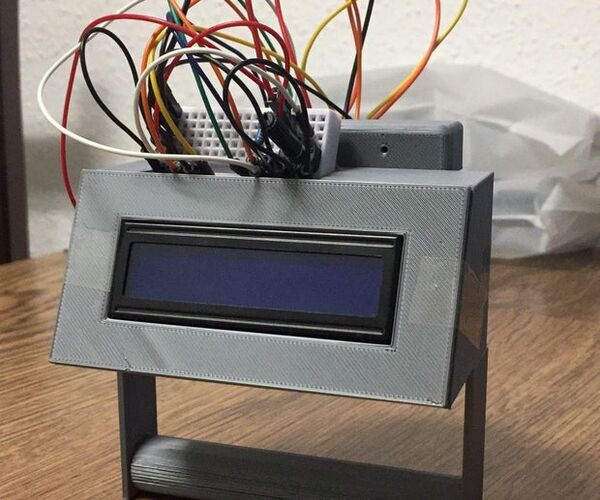
DigitalHeroMeter
"Tired of measuring distances with rulers, meters and other boring stuff? Here the solution that cool Heroes use! A really cool gadget that you can wear like a glove of Iron Man, easy to develop, quite functional and ridiculously easy to use. Adjustable speed of reading, comfortable and durable. I've seen a lot of these devices, but not like this one. The structure hold the hardware and is completely 3d printed and I used some Arduino components and Programming." [...]
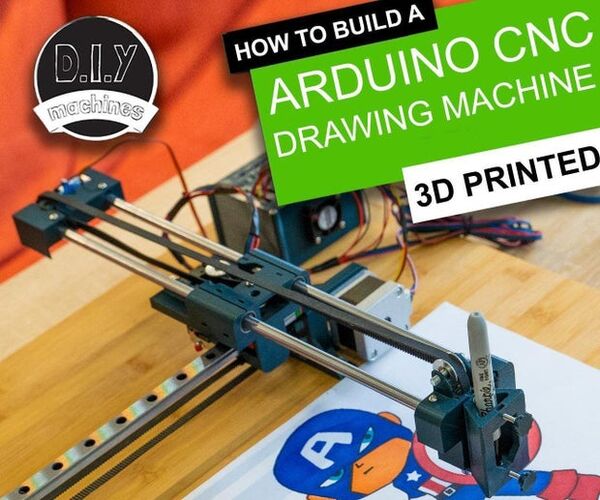
Easy 3D Printable Arduino CNC Drawing Machine - Low Cost Pen Plotter for Cakes, Card, Cases and More
"How to make a simple and high quality 3D printable CNC drawing machine to draw on almost anything. I'll step you through how to build your own including all the files, code and models you will need to assemble it. Once assembled, I'll then explain how to configure GRBL on the Arduino Uno, create your own GCODE from your drawings in Inkscape and control the machine from Google Chrome using Chillipeppr. This project has a relatively low cost and can produce some very detailed drawings. I've used it to create t-shirts, cake decorations, drawings to colour in myself (and some it coloured in for me!). You could also use it to draw out scale drawings, wedding invitations, birthday and Christmas cards and anything else you can think of." [...]

DIY Temperature Controlled Chamber Box With Peltier TEC Module
"I have assembled Temperature Controlled Chamber Box for testing small electronic boards. In this tutorial I have shared my project including source files and link to Gerbers files to make the PCB. I have used only cheap commonly available materials that where found in my stock. All electronic parts are DIP throughole for easy soldering. The key of this project is controlling software that I still working on it. PIC controller uses PWM to control TEC current in cooling mode." [...]
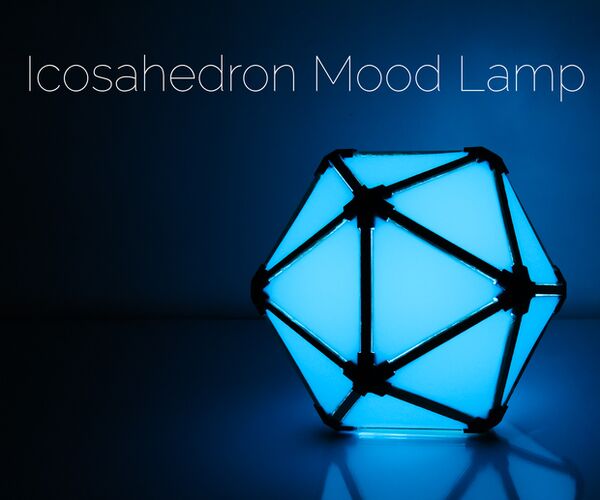
RGB Icosahedron Mood Lamp
"Geometric shapes have always captured our attention. Recently, one such fascinating shape piqued our curiosity: The Icosahedron. The Icosahedron is a polyhedron with 20 faces. There can be infinitely many non-similar shapes of icosahedra but the best known is the regular icosahedron, in which all the faces are constructed from equilateral triangles. In this project, we attempt to create a mood lamp in the shape of a regular icosahedron to add this wonderful geometric shape into our daily life. The lamp was made using digitally fabricated parts with the help of a laser cutter and a 3D printer." [...]

Portable IoT Display
"This instructables show how to use a 2 inches LCD and ESP32 to make a portable IoT Display. Supplies: TTGO T7 V1.0 2 inches IPS LCD 402035 Lipo D-Ring Locking Carabiner Clip Keychain" [...]

Optically Isolated Bidirectional I2C Shield For Arduino
"Optically isolator Arduino Shield has been designed to provide optically isolated I2C communication between Arduino and any other device or sensors that works with I2C protocols. I have used the ISO1540 Low-Power Bidirectional I2C Isolator IC from Texas Instruments to build this project, and the device is compatible with I2C interfaces. These devices have logic input and output buffers that are separated by Texas Instruments Capacitive Isolation technology using a silicon dioxide (SiO2) barrier. When used with isolated power supplies, these devices block high voltages, isolate grounds, and prevent noise currents from entering the local ground and interfering with or damaging the Arduino board. The ISO1540 has two isolated bidirectional channels for clock and data lines. The project is suitable for multi-master applications." [...]

How the 8086 processor handles power and clock internally
"One under-appreciated characteristic of early microprocessors is the difficulty of distributing power inside the integrated circuit. While a modern processor might have 15 layers of metal wiring, chips from the 1970s such as the 8086 had just a single layer of metal, making routing a challenge. Similarly, clock signals must be delivered to all parts of the chip to keep it in synchronization. The photo below shows the 8086's die under a microscope. The metal layer on top of the chip is visible, with the silicon substrate and polysilicon wiring hidden underneath. Around the outside of the die, tiny bond wires connect pads on the die to the external pins." [...]
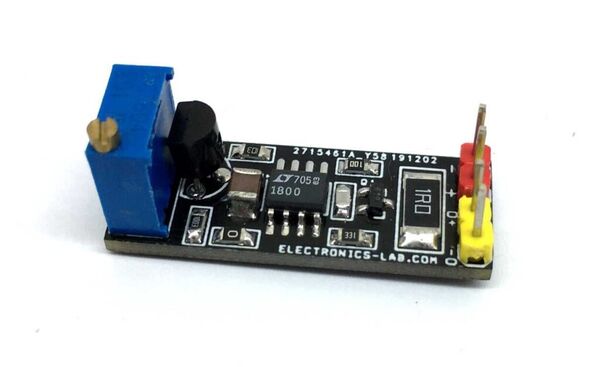
Adjustable Constant Current LASER Diode/LED driver
"I was testing a couple of low-cost laser diodes that come from china and I was wondering why those diodes don’t have any protection/driver circuitry. Those diodes come with a simple series resistor for current control which is not a good idea nor stable. Laser diodes are harmful and should have some sort of constant current circuit as a basic protection for the laser diode. As result, I built this circuit which provides highly accurate current control. The module is a great tool to drive low-cost laser diodes with superb accuracy. This circuit can drive diode starting from 0 mA to 115mA, usually, these cheap diodes require around 30mA current." [...]
Square NeoPixel Display with Black LED Acrylic
"NeoMatrix Square Pixels Build a square pixel display with Adafruit's 8x8 NeoMatrix and Feather M4. Use Black LED acrylic and 3D printed grid to create an evenly diffused LED effect. Electronics are housed in an elegant looking snap fit case with built-in on/off switch. LED animations are easily customizable with CircuitPython. " [...]
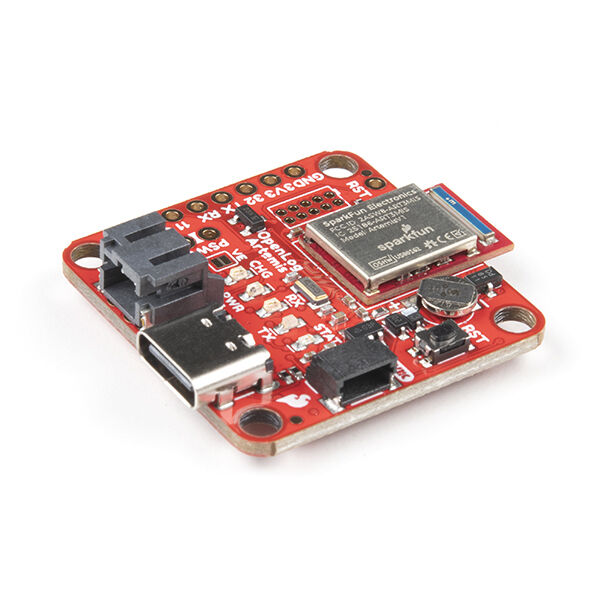
OpenLog Artemis Hookup Guide
"The SparkFun OpenLog Artemis (OLA) is a versatile, open source data logger that comes preprogrammed to automatically log a wide variety of data from a large number of sensors. And here’s the best bit… You can do all of this without writing a single line of code! The OLA automatically detects which sensors are connected to it and logs the data to microSD card in standard Comma Separated Value (CSV) format. The OLA is designed for users who just need to capture a bunch of data and get back to their larger project. We will quickly get you up to speed with the OLA and the Qwiic ecosystem so you can start logging all that data! Required Materials To follow along with this tutorial, you will need the following materials." [...]

Automating Blinds with a Retrofitted External Motor
"It’d be a real stretch to say I needed to automate the blinds in my apartment, but it was fun, and I’m loving the result. Blinds open automatically at sunrise and close at sundown. It’s nice to wake up to the sun! I designed most of this setup myself, and wanted to share how I approached it. There was a lot of prior art (a particular shoutout to The Hookup’s Guide), but nothing that worked the way I was wanting. Guides I ran across either mounted a motor inside of a 2″ track (mine are 1″), or were for pull-cord style blinds." [...]
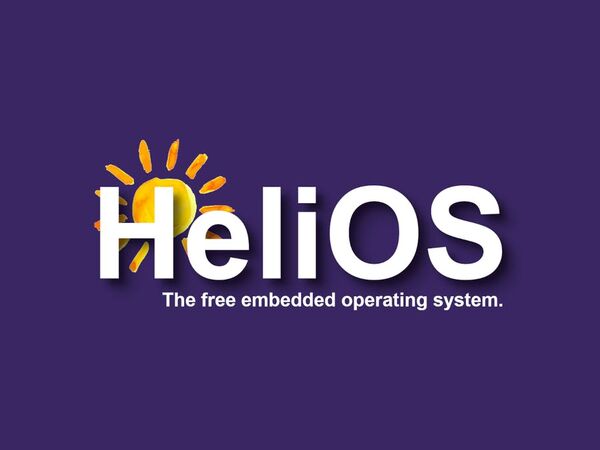
HeliOS Embedded Operating System
"An embedded operating system for Arduino that is small, easy to use and can be added to any project from the Arduino IDE Library Manager. Overview HeliOS was written with hobbyists, enthusiasts and researchers in mind who want more functionality than what existing task schedulers offer yet want to avoid the size and complexity of an RTOS. HeliOS has only 21 function calls and implements a wide variety of functionality including cooperative multitasking, event driven multitasking, task notification/messaging, timers and managed memory. Not only is HeliOS easy to use, it is conveniently available through the Arduino IDE Library Manager or from GitHub as a ZIP file. Either way, HeliOS is compliant with Arduino's 1.5 (rev 2.2) Library Manager Specifications so getting started is a snap! " [...]
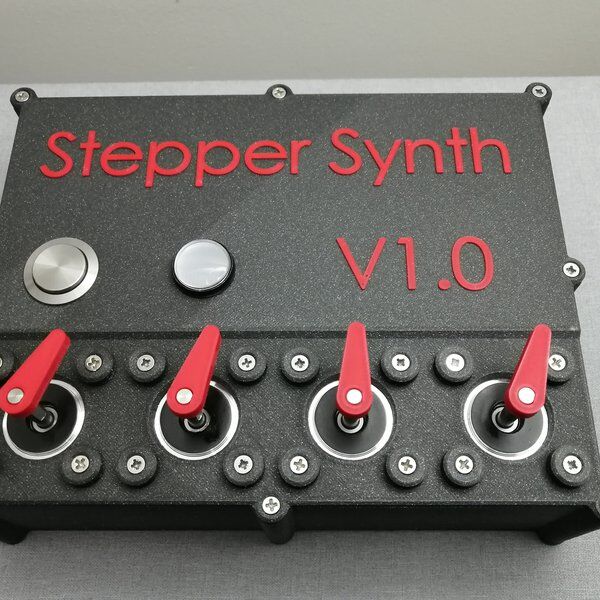
Stepper Synth
"A Musical 4-Stepper Motor MIDI Box Based on the Arduino Uno - CNCv3 shield (4x DRV8825), this magical box acts as a MIDI instrument to windows and will play anything sent to it. The purpose of this project page and its entries is to serve as a collection of all the performances that the box makes. Please see the "details" section below for details about the project itself. Please let me know in the 'discussion' section or the comments below if you have any MIDIs you want to be played. " [...]
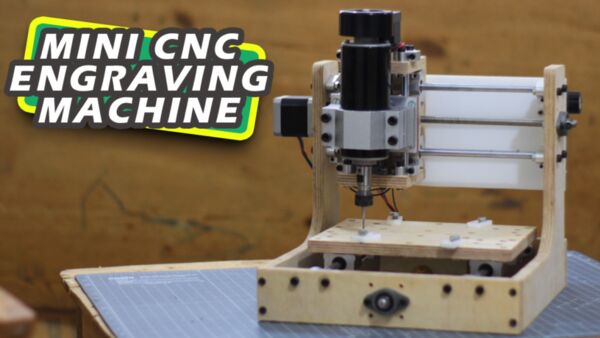
DIY CNC Engraving Machine
"Hello friends in this post I’ll show how I made my own mini DIY CNC engraving cum Milling machine using Arduino and GRBL CNC shield. The frame of machine is made up of 12mm plywood which is very strong and easy to work with. I have used 500W spindle for this mini cnc engraving machine which have enough power to work done. working area of this machine is 120 x 120 x 30 mm. I have tested this machine on Acrylic sheet, PCB, Wood and works fine. I have not tested with aluminium yet, but yes for shaloow engraving with high quality end mill surely we achieve good result on aluminium as well." [...]

LEDura - Analog LED Clock
"After a long time of just making various project I decided to make an instructable myself. For the first one, I will guide you through process of making your own analog clock made with awesome addressable LED ring. The inner ring shows the hours, outer ring shows minutes and seconds. Beside showing the time, clock can also display the room temperature and it can be a very nice decoration in the room. Every 15 minutes, clock also makes some special effects video shows them all, make sure to check it out. With the help of 2 buttons and potentiometer, user can chose between different mode and modifie colors by his own desire." [...]
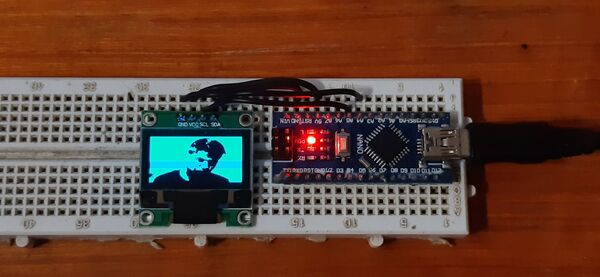
0.96 inch OLED Getting Started Guide
"0.96 inch OLED Getting Started Guide for beginners so you bought one of these very popular 0.96-inch OLED display from the internet, and having some issues to get them to work or you don't know where to start. " [...]

Moon Phase Display
"A battery powered e-ink display showing the current phase of the moon. I've used this project as a way to learn. It includes my first custom PCB, one of my first 3D prints, my first encounter with open source graphics software and some cobbled together CircuitPython code. I plan to write an update on each of these highlighting what I've learned, in case others want to venture down this torturous path. I'm indebted to NASA for the data and to the fine authors on the Adafruit learning system for showing me how to use it. I really like the aesthetic of three colour e-inks and the idea of low power single purpose displays or indicators." [...]

Metaclock
"Some time ago I saw a Tweet from the arduino official account talking about an amazing project called "clockception! ", the project seems to be a digital clock created using 24 analog clocks! The video run for a few seconds and I did not have the tech details, but I was amazed! So, I decided to create a new project from scratch inspired in a similar concept and visuals but more colorful using processing and a Raspberry Pi. At first, maybe it's difficult to understand what is "a digital clock formed by 24 analog clocks". A picture is worth a thousand words." [...]

Automated Garden System Built on Raspberry Pi for Outdoors or Indoors - MudPi
"Do you like gardening but can't find the time to maintain it? Perhaps you have some houseplants that are looking a little thirsty or looking for a way to automate your hydroponics? In this project we will solve those problems and learn the basics of MudPi by building an automated garden system to help take care of things. MudPi is an open source garden system I made to manage and maintain garden resources built on a Raspberry Pi. You can use MudPi for both indoor and outdoor gardening projects scaled to your needs as it is design to be customized. Today we will start with a basic setup I used at home to see how MudPi can be deployed to mange an outdoor garden and control the irrigation." [...]
That's all Folks!



